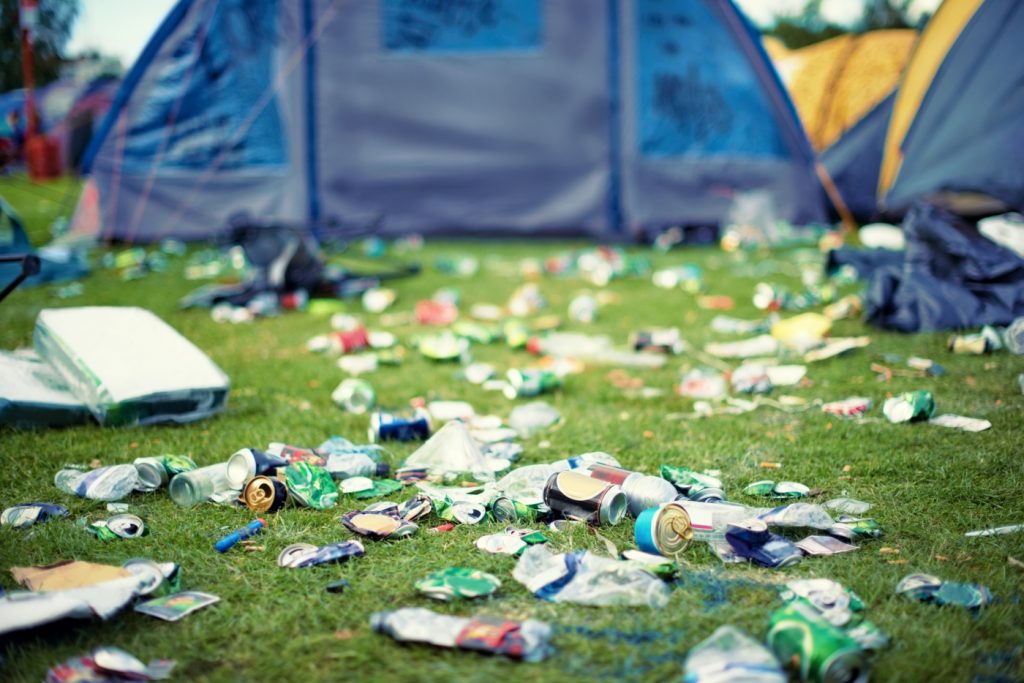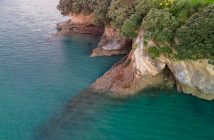Increasing numbers of tourists are eroding the very attributes that make New Zealand such an attractive country to visit, warns Parliamentary Commissioner for the Environment (PCE) Simon Upton

The Commissioner has released a report on the environmental consequences of projected tourism growth in New Zealand. He says tourism is often seen as an environmentally benign form of economic development, but it does place a number of strains on the environment, including:
- visitor density and loss of natural quiet;
- water quality degradation;
- solid waste generation and management;
- infrastructure development and landscape modification;
- biodiversity loss and biosecurity risk;
- greenhouse gas emissions.
Despite a longstanding emphasis on sustainability, the Commissioner says the existing policy mix is unlikely to prevent a worsening of tourism’s environmental burden.
Auckland University of Technology Professor Michael Lueck comments:
The report is very timely, and desperately needed.
It states that ‘tourism’s footprint is starting to become a source of environmental concern in New Zealand’, but it is obvious that we are well beyond the starting point – these concerns have existed for over two decades, and become increasingly urgent.
The environmental burden lies mostly in extremely popular areas, and New Zealand experiences overtourism similar to large cities in Europe (e.g., Amsterdam, Venice, Barcelona), where an active anti-tourism movement arose. But in New Zealand, overtourism mostly affects natural areas, and these need to be managed carefully. A range of policy and management options are available and need to be implemented. We can learn from numerous examples around the globe, and adopt successful schemes and policies.
The often heralded dispersal of visitors offers very limited success, often spreading the problem, rather than solving it. A good example is how Zion National Park manages their onslaught of visitors: Private cars, RVs and buses need to be left in a car park at the park entrance, and a free and frequent ‘road train’ shuttles visitors to and from the main points in the park. This could be a cost-effective solution for Milford Sound.
It may also be prudent to rethink the National Park Act, which provides for free access to the conservation estate. Park fees have been successfully implemented in other countries (e.g., USA, South Africa), and there are fair and financially viable options to implement these, without having a toll booth at each access point.
It appears that the main problem is the sheer number of tourists, and we need to look at slowing this growth. The often cited ‘high-value tourism’, or ‘quality over quantity’ does not always work, but it would be fairly easy to, for example, limit the number of cruise ships coming into the country. These put a disproportional burden on New Zealand’s infrastructure, environment, and culture, while the economic benefits are comparatively small.
Cawthron Institute Scientist Mark Newton comments:
New Zealand has a long history of concern for the environmental impacts of tourism, but when 52% of New Zealanders now think predicted tourism growth is ‘too much’ (up from 30% in 2015), 43% think tourism puts too much pressure on New Zealand, and more than a quarter think there are too many international visitors, it’s time to take notice.
New Zealand must now decide whether it wants to make a planned transition to a more sustainable tourism future, or to trust that continued growth to 2050 is viable. For a planned transition, it will be imperative that government and industry meaningfully engage with communities, iwi and hapū to reimagine the future of tourism to ensure this vital industry can provide long-term, sustainable prosperity for New Zealand.
Massey University Professor Regina Scheyvens comments:
We can no longer be complacent and a business-as-usual approach to growing our tourism sector will have devastating consequences for the natural environment which is the major drawcard for our tourists.
The report, quite rightly, notes that in contrast to the ‘win-win-win’ rhetoric promulgated by the sector (i.e. that we can grow tourism numbers, and provide quality jobs, and protect the environment), trade-offs will need to be made – however trading on the integrity and wellbeing of our natural environment should not be an option.
A useful approach is taken by organisations like Auckland Tourism, Events and Economic Development (ATEED) which seeks to make Auckland a great place to live, a great place to work, and a great place to visit.
We need to see tourism in this holistic, integrated way in terms of how it aligns with broader national goals. We need to consider how tourism can protect the environment while enhancing the wellbeing of New Zealanders, both those working in the industry and those living in the places that tourists like to visit.
Current government policies of geographical and seasonal dispersal of visitors are a useful step in the right direction. In weighing up priorities, the wellbeing of our environmentally-blessed but economically challenged regions, including Northland and Westland, should be prioritised. Using the International Visitor Conservation and Tourism Levy to invest in these places, and the people living there, is critical.
Regarding the question of how to protect our natural assets, especially iconic sites and walks, in future, it is likely that quotas will be needed. For example, charging $20 per adult during the peak season and putting a cap on total numbers per day to do popular walks like the Tongariro Crossing or Roy’s Peak, could help to control the impact.
With any quota system, securing access for New Zealanders – especially those of low economic means – is important. There needs to be a sense that we, as New Zealanders, are all kaitiaki of our precious natural environment and that can only come if we all have the chance to learn about and enjoy experiences in nature.
Future policy should be informed more deeply by Māori values. A Māori tourism operator on the Whanganui River told me he believes every boat taking tourists on that river – whose spiritual significance is now recognised through the river being granted legal personhood – should have a cultural guide. Their role would be to better inform tourists of the intertwined cultural, spiritual and natural elements of that unique environment, and to ensure respectful behaviour from visitors.
Fundamentally, the Department of Conservation needs more resources to re-design tourist experiences in conservation areas of New Zealand, providing better infrastructure in high use, short walk areas (e.g. boardwalks) to minimise environmental damage, and dispersing more adventurous tourists to lesser-used, but still well-serviced, trails and locations.”
University of Canterbury Professor Michael Hall comments:
The report identifies some of the key environmental pressures arising from tourism but, as it notes, present policies and strategies of dealing with it are limited.
As the inquiry progresses they will need to look at international practices including perhaps looking at actually limiting visitor growth in some locations.
In some areas, undesirable environmental and social impacts are the flip side of dispersing tourists into regional New Zealand. Tourism can help support public services in some locations that might otherwise be marginal. However, many rural areas clearly need to carefully consider how they can best respond to the temporary growth in their population from tourism. Tourists are possibly more visible in the regions than in the cities but urban areas are also impacted by tourism and this is a concern that the PCE may need to consider in the next stage of the investigation.




